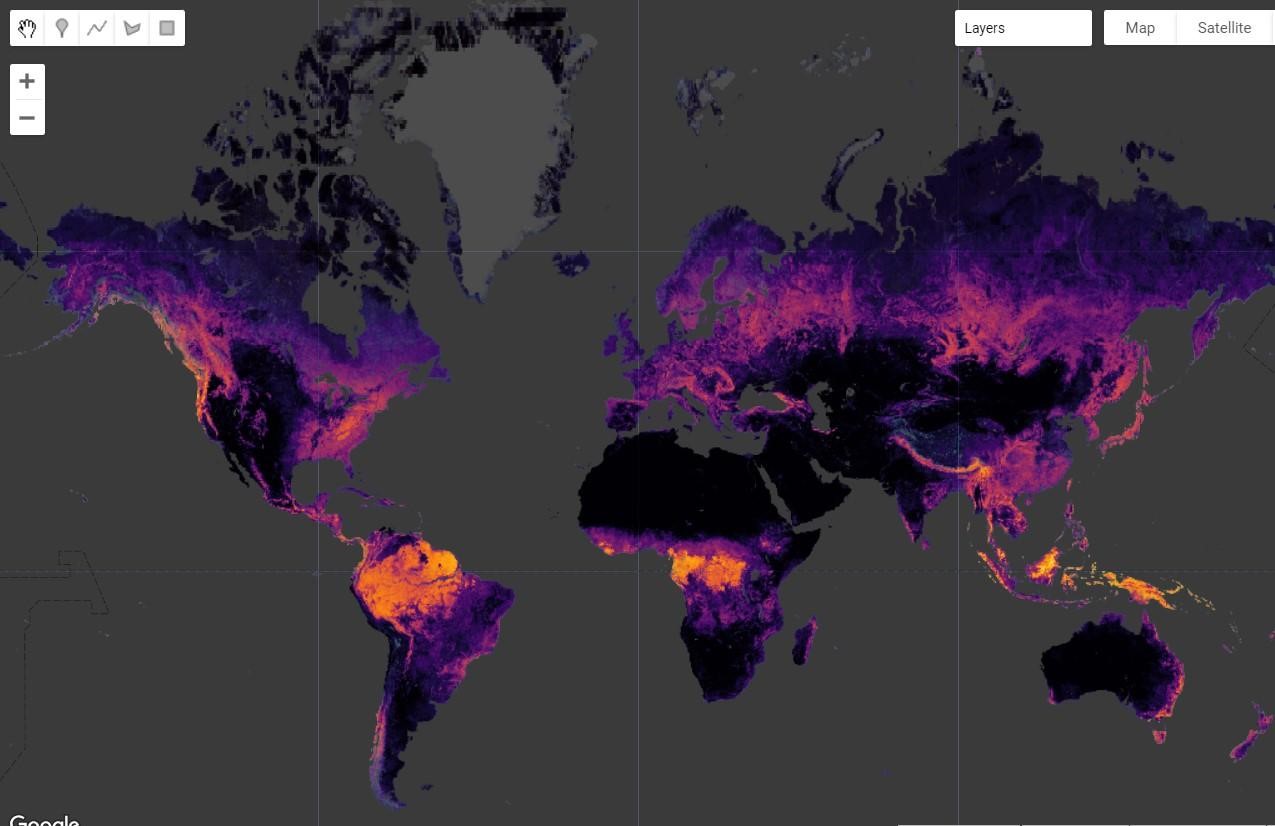Objectives of the service

OroraTech is currently developing the Above-Ground Biomass Estimation data product. Above-ground biomass (AGB) estimation is the process of measuring the amount of living organic matter above the ground, including trees, shrubs, and other plants. ABG serves as a proxy for stored carbon aiding in carbon credit verification and informing diverse industry applications. Wildfire is one of the main catastrophic loss events for forestry based carbon projects. ABG data combined with our wildfire database results in OT Carbon, a data product describing ABG as well as the change in ABG through wildfires.
Users and their needs
Users for this product include:
-
Commercial Forestry: ABG estimation can be used to quantify the carbon storage benefits of sustainable forest management practices and can also be used for inventory monitoring of wood products.
-
Biofuel Producers: ABG can be used by biofuel producers for inventory monitoring.
-
Large Multinationals: ABG estimation can be used to disclose the ESG impact of business practices on nature.
-
Governments: ABG estimation can be used to develop, implement, and enforce climate change mitigation policies.
-
Carbon project developers and carbon certification and verification companies: ABG estimation is used to develop and validate carbon offset projects.
Service/ system concept
The planned service provides ABG estimates and associated measurement uncertainties on a global scale. The core components of the envisioned service are shown in Figure 3. ABG maps with a spatial resolution of 10 m are derived from temporally aggregated Sentinel-2 MSI Level-2A data using an ensemble of estimators. These estimators are Convolutional Neural Networks (CNNs) that are trained using ABG reference data from the Global Ecosystem Dynamics Investigation (GEDI) and Sentinel-2 MSI Level-2A multispectral data. Based on customers’ requirements, the temporal aggregation period for the generated ABG maps will be about 3 months. The data will be made accessible via a dedicated API and via OroraTech’s Wildfire Solution. Continuous evaluation using independent reference data will allow quality control during operations.

|

|
| Figure 3: Simplified system architecture of the envisioned service. | Figure SEQ Figure \* ARABIC 4: Performance evaluation of the developed prototype against GEDI L4B Gridded data at the 1 km scale based on 60 globally distributed Sentinel-2 Level-2A products. |
Space Added Value
The ABG product consists of a machine learning model that continuously estimates above ground biomass values. Sentinel 2 data is used as an input for the model. The spatial resolution of the model is 10m x 10m, with a 5-day average update rate for any specific location. This is a global product, however, estimation accuracy is expected to deteriorate north of 51.6 and south of -51.6 latitude. By leveraging OroraTech´s extensive global wildfires and burnt areas dataset, additional insights, such as event-related above ground biomass change detection and event-related carbon credit estimation, can be provided.
Current Status
With the completion of the Final Review, OroraTech demonstrates that the platform seamlessly tackles the critical challenges faced by carbon credit verification and certification firms as well as carbon project developers. By streamlining processes, enhancing transparency, and fostering trust both internally and externally, we are primed to make a substantial impact. OroraTech’s satellite-based solution, boasting superior resolution compared to existing market offerings, promises to deliver immense added value to this industry.
On the technological front, the envisioned technical approach holds great promise, with no significant technological impediments identified thus far. The developed prototype demonstrates commendable performance in predicting ABG at the 1 km scale. Nonetheless, substantial additional development efforts are still needed. These efforts are essential for enhancing the ABG estimator's performance at the finer 10 m scale and for successfully developing and testing the proposed methods for temporal mosaicking and quantifying measurement uncertainty.



